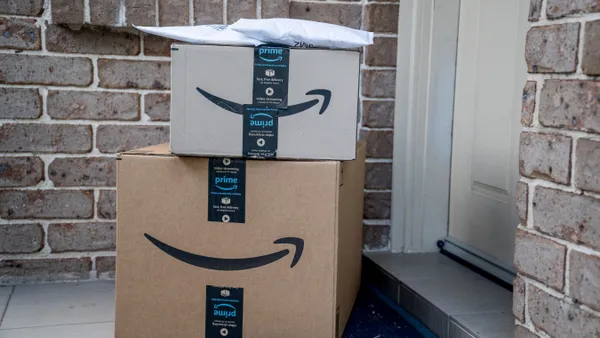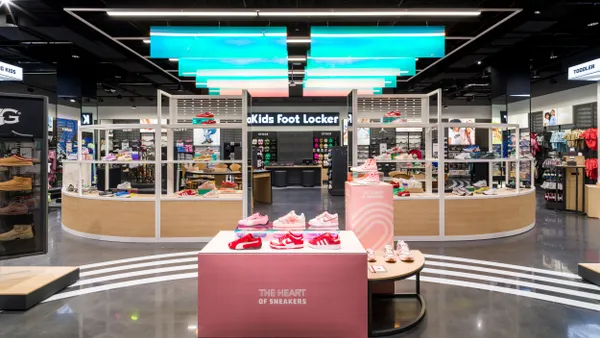The omnichannel retail environment evolved significantly last year as consumers adopted online ordering, both for pickup and delivery, at a rapid pace.
The trend has continued in 2021, with first-quarter e-commerce sales up 39.1% over year-ago levels and accounting for about 13.6% of total retail sales, according to data from the U.S. Commerce Department.
The increase in omnichannel volume, combined with ongoing pressures in the labor market and challenges in the macro-economic environment, is forcing retailers to rethink their supply chain operations and highlighting the need for investments in both deep learning and automation. Retailers are seeing faster inventory churns and inventory mis-alignments due to shifts in customer patterns, while poor visibility into inventory leads to delays and higher costs, which results in lost sales and impact to margins. Retailers are now focusing on aligning their supply chain with their omnichannel customer aspirations.
Leading retailers have leveraged advanced data analytics to respond quickly to changes in the marketplace and reduce their logistics costs. Increasingly, retailers are turning to artificial intelligence (AI), machine learning (ML) and deep learning (DL) solutions to enhance the efficiency of their supply chains and automate supply chain decisions.
For example, a recent report by McKinsey & Co.¹ found that successfully implementing AI-enabled supply-chain management has enabled early adopters to improve logistics costs by 15%, inventory levels by 35%, and service levels by 65%, compared with slower-moving competitors.
"Retail supply chain operations are looking at using AI-based models to more accurately forecast demand, improve distribution center throughput, and optimize last-mile delivery," said Azita Martin, General Manager for AI in Retail, CPG and Restaurants at NVIDIA.
"AI is becoming a critical component in creating the necessary operational agility to respond to market opportunity and challenges," she said.
Supply chain solutions leveraging AI, DL and ML are helping retailers, consumer packaged goods manufacturers and restaurants optimize demand forecasting, reduce costs for omnichannel fulfillment, and streamline warehouse operations, shipping and other logistics functions, driving both efficiency and customer satisfaction.
Demand forecasting, which has historically often relied on batch processing that can take weeks using incomplete data, is one of the key areas where AI is driving ROI across retail, CPG and restaurant operations.
It enables retailers to more quickly adjust sales forecasts based on trends, consumer behavior and other variables to ensure that inventory levels are optimized per store location, and products are in-stock to drive sales.
"With faster models, retailers are able to make frequent decisions aligned with their business procurement and location delivery policies," said Nick Underwood, Retail CTO, Dell Technologies.
Amid increased demands for efficiency in the supply chain, retailers can use hyper-tagged, real-time demand data and ML powered by graphics processing units (GPUs), to improve sales forecasting with instant learning, he said.
"This can transform the performance of customers' supply chain, from purchasing to warehouse transfers, production planning and shipments," said Underwood.
Likewise, demand forecasting also plays an important role in the quick-service restaurant industry by helping regulate production levels to avoid waste and thus improve margins. Operators in this segment are using advanced analytics to predict customer flow and more accurately set production levels, as well as optimizing ingredient inventory.
Adapting to omnichannel retailing
In retail, strong gains in consumer demand for curbside pickup and buy-online, pickup-in-store (BOPIS) services, along with growing expectations for same-day fulfillment, have pressured retailers' distribution models and driven increased interest in automation.
Target, for example, reported that sales through its drive-up service, in which it fulfills same-day orders by bringing them directly to consumers' cars, increased by 600% last year.
Retailers are responding to omnichannel demands by exploring automated solutions in the form of micro-fulfillment centers that use automated order picking, warehouses with robotic pickers and self-driving vehicles, and even autonomous vehicles that deliver directly to customers' homes. AI supports the vison-based systems for these solutions with advanced product-recognition and navigation technologies that learn on the job, and can even be trained in the lab using digital twinning.
To meet the demands of pick-and-ship and packaging operations that require fast visual inspections of items moving on conveyor belts, companies are also using computer-vision based visual inspection for quality control and accuracy.
Retailers are also seeking to minimize shipping costs by using advanced "sortation" technologies that minimize carrier handling charges. Automating the sortation process to deliver products to people's homes, along with optimizing delivery routes for carriers, leads to faster delivery times, increased successful deliveries, and decreased last-mile expenses. For example, companies are using AI to estimate delivery times and monitor the impact of potential disruptions, allowing retailers to react instantly and select alternate delivery routes.
Given the challenges of the current labor environment, the need for increased supply chain efficiency and the expanding demand for omnichannel shopping, there has never been a better time for retailers to make their supply chains "smarter" and more agile with technologies that leverage AI.
Visit this web page to learn more about NVIDIA's AI solutions for retail.
Learn more about Dell Technologies solutions for retail.










